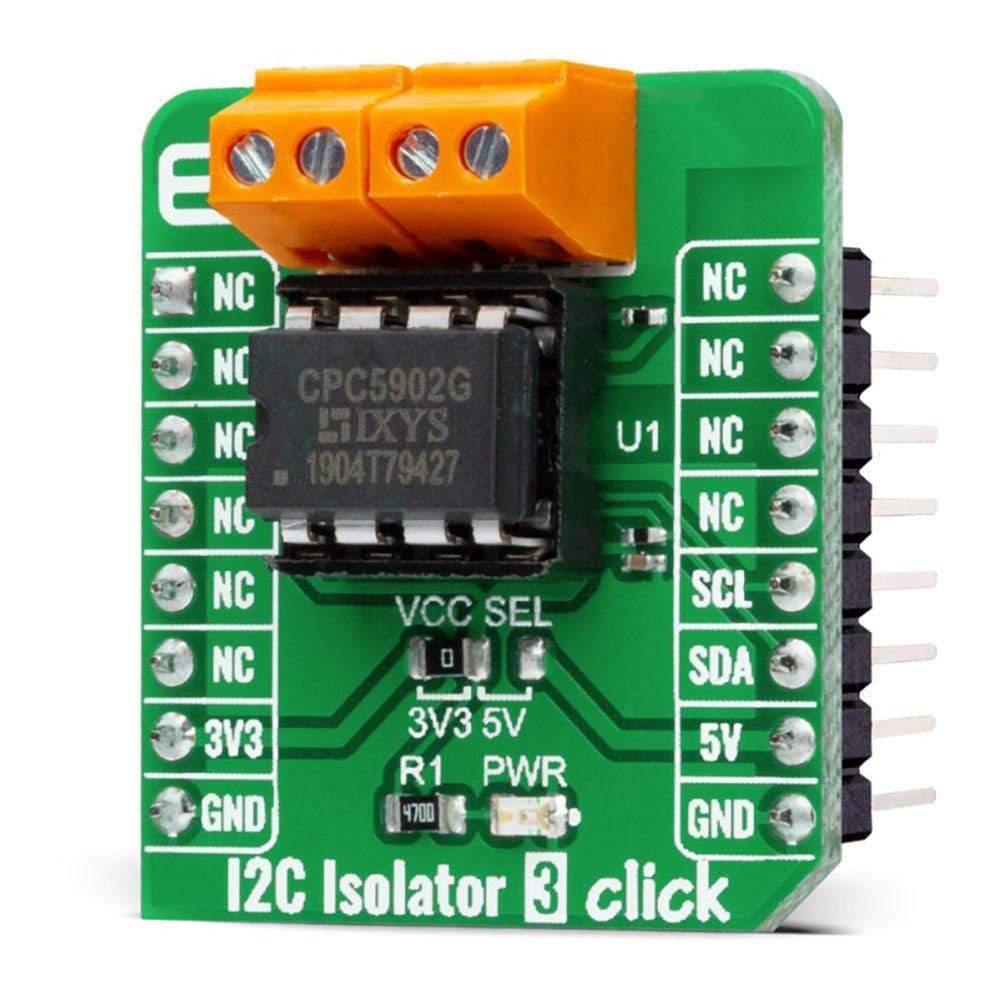
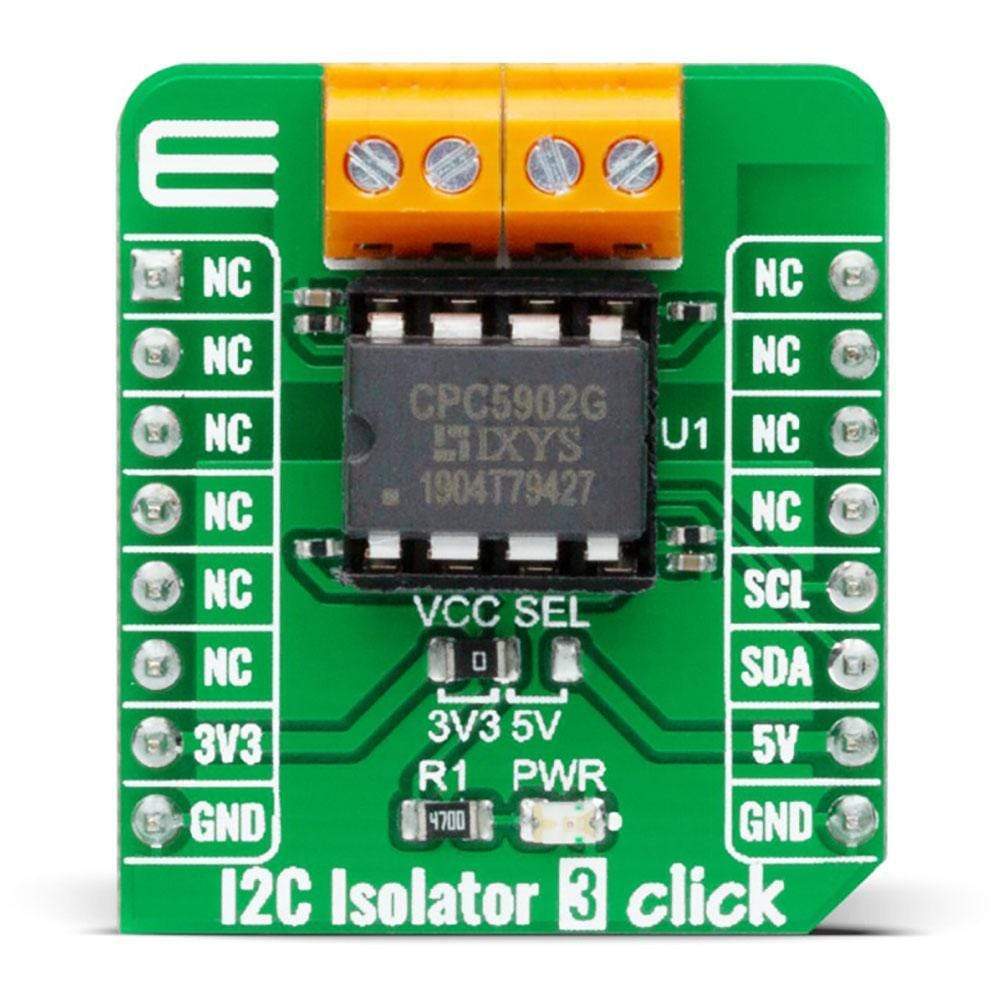

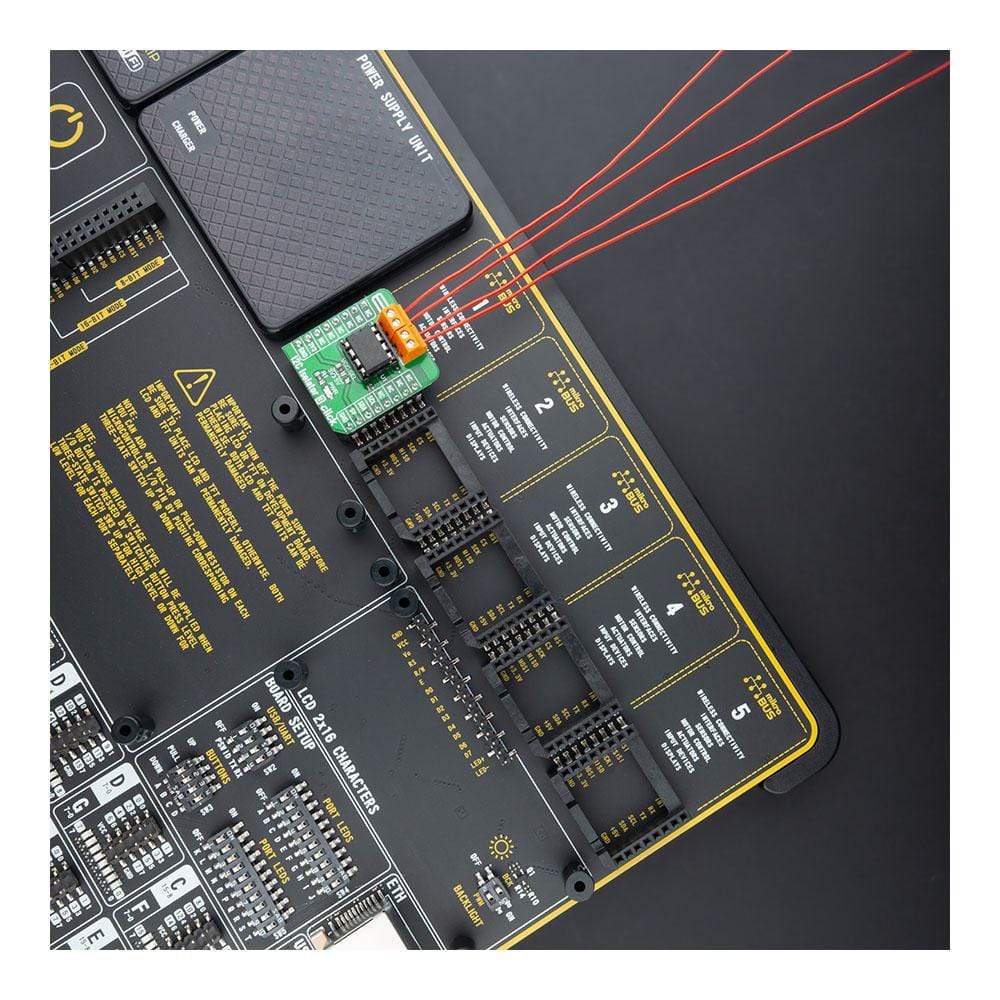
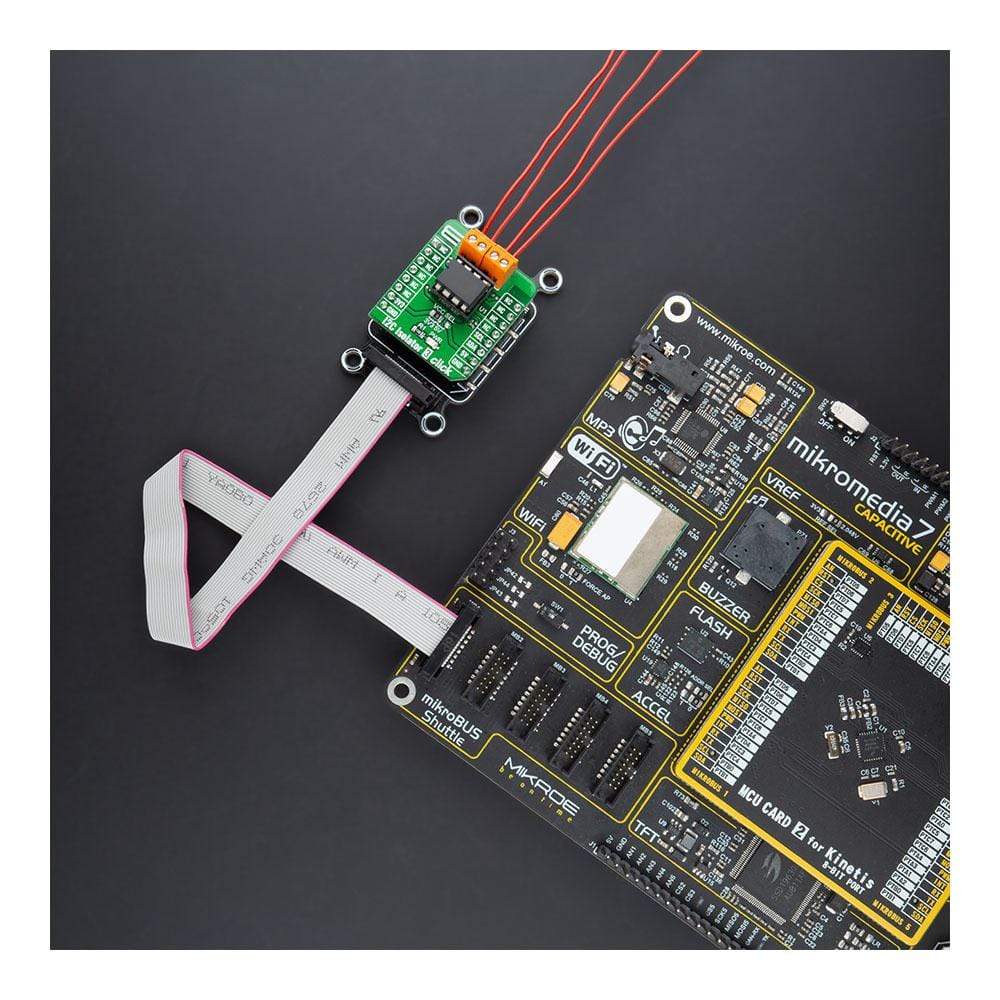
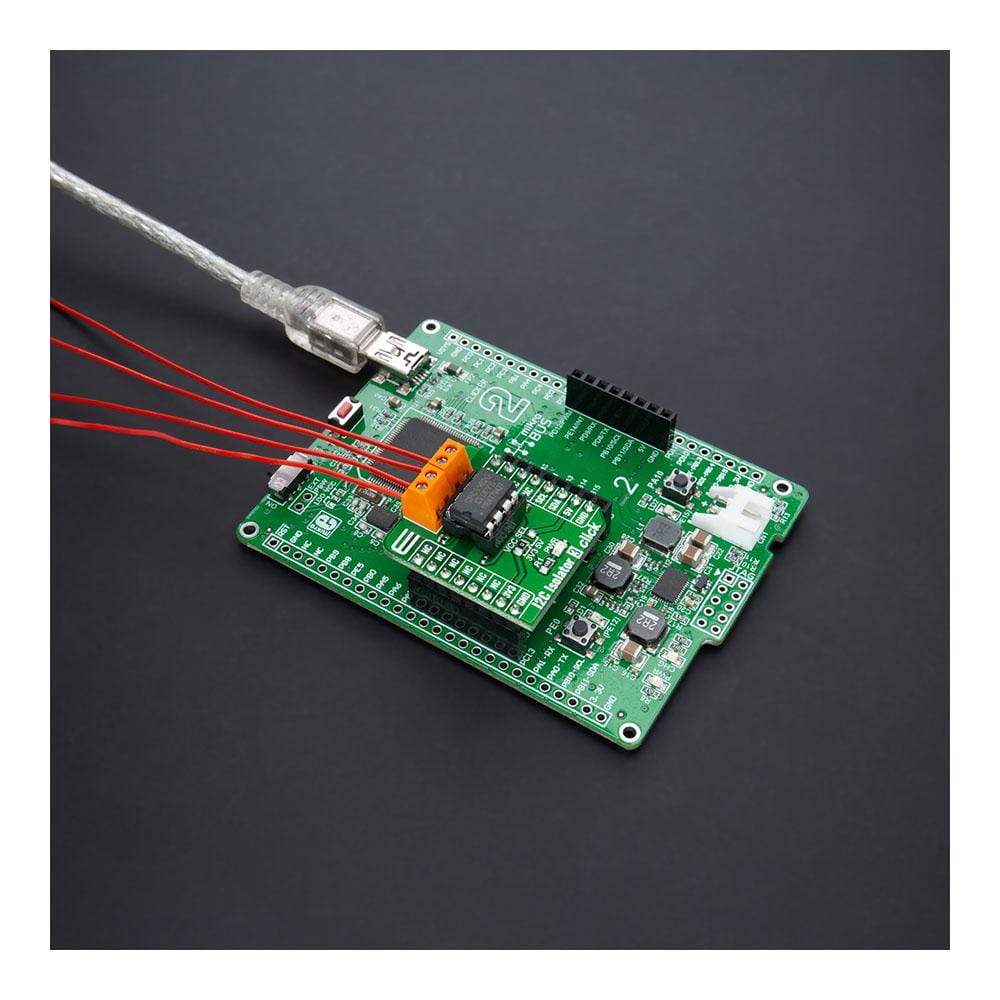
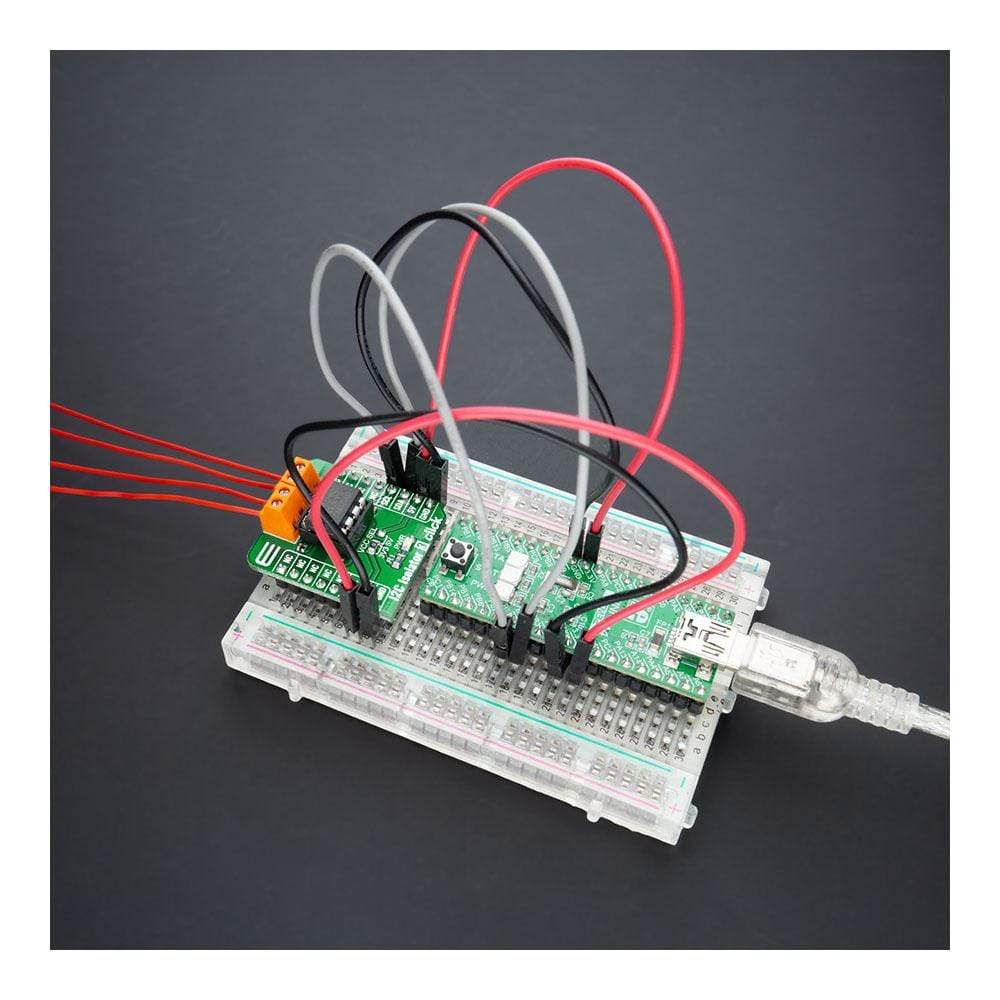
Overview
The I2C Isolator 3 Click Board™ is a compact add-on board that offers completely isolated bidirectional communication. This board features the CPC5902, a dual optically isolated bidirectional logic-bus repeater from IXYS Integrated Circuits Division. The CPC5902 pass DC signals and don’t need to be clocked periodically to sustain the logic states. It supports I2C clock stretching while providing 3750Vrms of galvanic isolation. When different supply voltages are applied on both power sides of the CPC5902, it can also function as a logic level translator for levels as low as 2.7V or as high as 5.5V. This Click Board™ is ideal for Power-over-Ethernet applications, providing buffering and isolation of the clock and data signals between MCU and the Power Supply Equipment (PSE) controller, and also suitable as an I2C bus length extender and logic-level translator.
The I2C Isolator 3 Click Board™ is supported by a mikroSDK compliant library, which includes functions that simplify software development. This Click Board™ comes as a fully tested product, ready to be used on a system equipped with the mikroBUS™ socket.
Downloads
Das I2C Isolator 3 Click Board™ ist eine kompakte Zusatzplatine, die vollständig isolierte bidirektionale Kommunikation bietet. Diese Platine verfügt über den CPC5902, einen dualen optisch isolierten bidirektionalen Logikbus-Repeater von IXYS Integrated Circuits Division. Der CPC5902 überträgt Gleichstromsignale und muss nicht regelmäßig getaktet werden, um die Logikzustände aufrechtzuerhalten. Er unterstützt I2C-Takt-Stretching und bietet 3750 Vrms galvanische Trennung. Wenn auf beiden Stromseiten des CPC5902 unterschiedliche Versorgungsspannungen angelegt werden, kann er auch als Logikpegelumsetzer für Pegel von nur 2,7 V oder bis zu 5,5 V fungieren. Dieses Click Board™ ist ideal für Power-over-Ethernet-Anwendungen, bietet Pufferung und Isolierung der Takt- und Datensignale zwischen MCU und dem Power Supply Equipment (PSE)-Controller und eignet sich auch als I2C-Buslängenverlängerer und Logikpegelumsetzer.
Das I2C Isolator 3 Click Board™ wird von einer mikroSDK-kompatiblen Bibliothek unterstützt, die Funktionen enthält, die die Softwareentwicklung vereinfachen. Dieses Click Board™ wird als vollständig getestetes Produkt geliefert und ist bereit für den Einsatz auf einem System, das mit der mikroBUS™-Buchse ausgestattet ist.
| General Information | |
|---|---|
Part Number (SKU) |
MIKROE-4467
|
Manufacturer |
|
| Physical and Mechanical | |
Weight |
0.018 kg
|
| Other | |
Country of Origin |
|
HS Code Customs Tariff code
|
|
EAN |
8606027381621
|
Warranty |
|
Frequently Asked Questions
Have a Question?
Be the first to ask a question about this.







